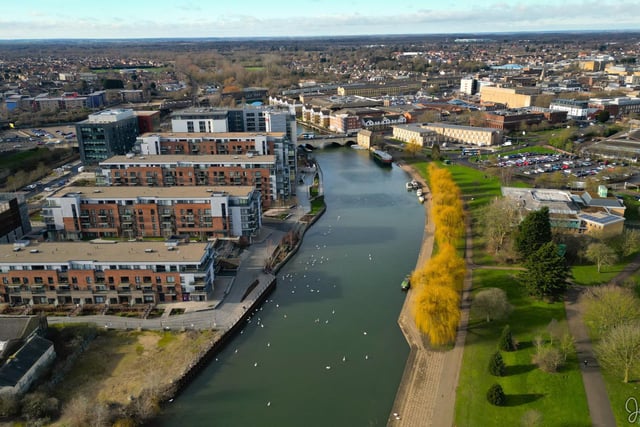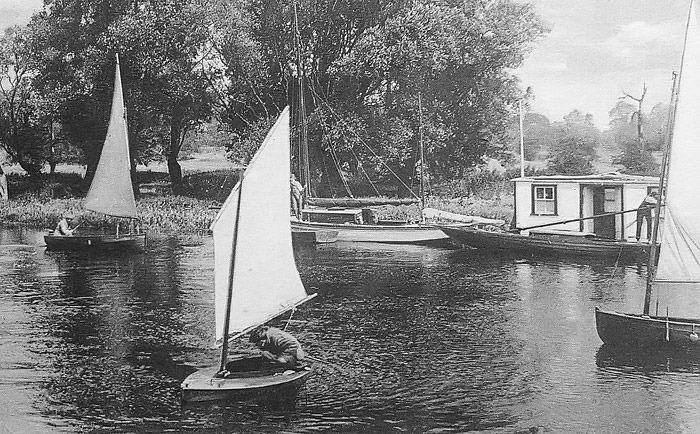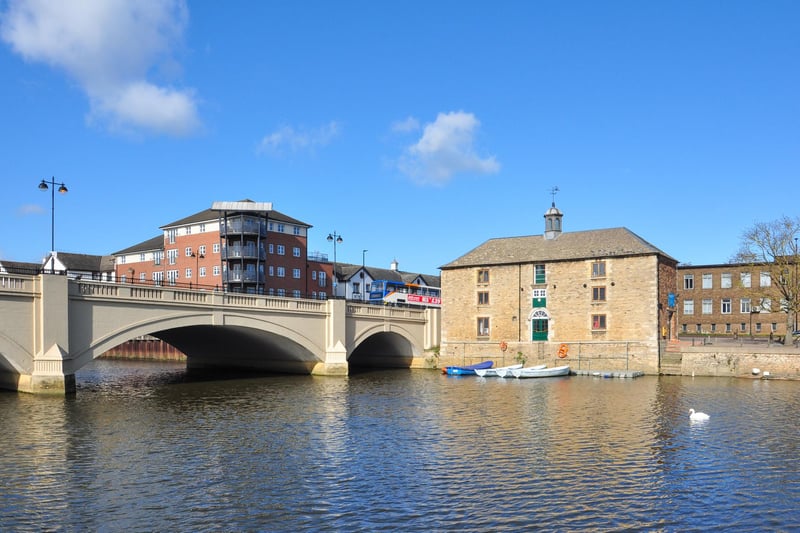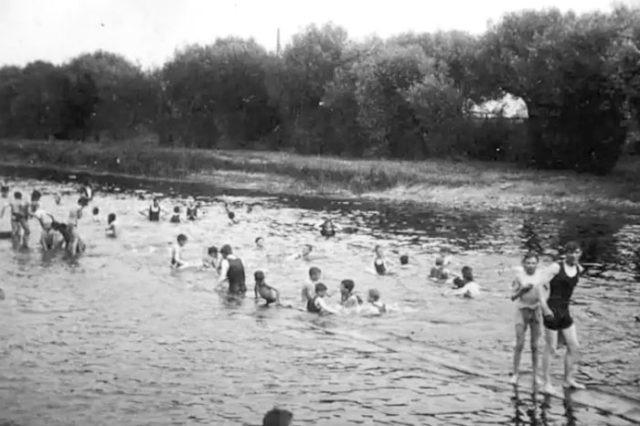While some may insist (wrongly) on calling it the “nen”, the glorious River Nene – correctly pronounced “neen” – is Peterborough’s oldest and most revered physical identifier.
Whether you paddle in it, row on it, work by it, live on it, swim in it or simply enjoy strolling alongside it; our old friend the Nene is a reassuring familiar presence to us all.
The tenth longest river in the UK, the River Nene is a cherished – if consistently underappreciated – artery of fluid beauty which has determined our region’s physical landscape and geographical identity for millenia.
Like so many other settlements, the fledgling town of Peterborough – originally named “Medeshamstede” by those wacky Anglo-Saxons – grew up around the banks of the Nene.
But unlike many other settlements which grew up on riverbanks for reasons of trade and commerce, our city’s origins owe more to the river’s physical attributes.
Indeed, it is thought this region has actually been inhabited for thousands of years because the river – our river – helped to physically create sizeable chunks of permanently drained land within the marshlands of The Fens.
The River Nene as we know it is, roughly, a good hundred miles long.
Starting at Northampton where it rises at sources near Bradby, Naseby and Yelvertoft, the Nene wends its way through Wellingborough, Thrapston, Oundle, Peterborough and Wisbech before finally meeting the sea at The Wash.
Once an important navigational artery, it wasn’t uncommon to see fertiliser, grain and timber boats coming come in as far as Peterborough to do business with Whitworth’s Mill or the timber yards on the south side of the river.
It is thought that the 18th-century Customs House building which stands by Town Bridge could have started life as a granary, and may even have served as a bonded warehouse thereafter.
It’s even rumoured that Napoleonic prisoners of war disembarked there en-route to a prison camp at Norman Cross.
Whether that’s true or not, the Customs House is the only building left in Peterborough that shows the city was once an inland port.
Navigable for a good 88 miles, the Nene is a perennially popular highway for boaters to explore throughout the year, with most leisure use taking place between Northampton and Peterborough during the warmer months.
There is also a long-distance footpath, the Nene Way, for those who prefer to enjoy the river on terra-firma.
Running 110 miles, this delightful pathway takes in charming wee places like Earls Barton, Wadenhoe, Warmington, Fotheringhay, Elton and Wansford to remind cyclists, walkers, joggers and hikers that the Nene is far more than just a city artery.
But for us here in Peterborough, that is mostly what it is.
A place where we can escape the hustle and bustle of city life and and enjoy a distinct feeling of calm – and sometimes even serenity – away from the pressure of modern city life.
So, if you’re feeling a bit stressed but aren’t able to get to the river right now, settle down and join us for the next best thing.
Courtesy of our good friends: Peterborough Images, The Secret Roamer, Jim Mack (Peterborough at Night) and of course, David Lowndes, we’ve put together a photographic and video tour that will allow you to enjoy a virtual riverside escape, of sorts.
Enjoy!

1. Peterborough in Focus: River Nene
Peterborough - formally named "Medeshamstede" by Anglo-Saxons - grew up on the banks of the River Nene. Photo: Jim Mack / Peterborough at Night

2. Peterborough in Focus: River Nene
Though the date of this photo is unknown, it captures perfectly how previous generations revered the river. Here, sailing boats and a Nene houseboat relax together on a stretch of river upstream of Orton Staunch (alongside what would today be the Thorpe Wood golf course). Photo: Peterborough Images

3. Peterborough in Focus: River Nene
It is thought that Peterborough's 18th-century Customs House building could have started life as a granary. Whether that’s true or not, it is the only building left standing which proves the city was once an inland port. Photo: Adobe / Peter Moulton

4. Peterborough in Focus: River Nene
This lovely photo from the 1920s show that, long before Peterborough had bathing facilities, the River Nene just off River Lane was the place to be! Photo: Peterborough Images